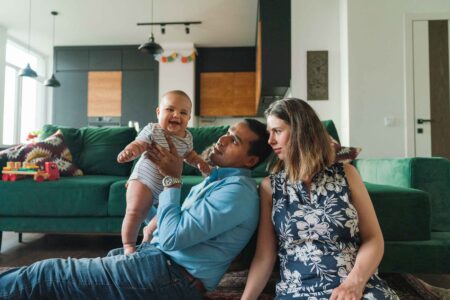The number of rental properties available in Victoria has decreased by two thirds in two years, and demand for housing has driven up median rents in some Melbourne suburbs by $112 per week, Anglicare Victoria’s 2023 Rental Affordability Snapshot has revealed.
Just 11,687 private rental listings were available for analysis when the data was captured on Saturday 18 March, with the number of affordable rentals in metropolitan Melbourne dropping 44 per cent in the past year. While affordability in regional Victoria improved slightly, only 17 of 48 local government areas had any rental listings available at all.
Currently there are just 100 properties across the entire state that are affordable for Victorians on income support, but for individuals on Youth Allowance or JobSeeker payments, not a single property available was affordable without putting them into rental stress.

Sue Sealey, Acting CEO of Anglicare Victoria said the housing crisis was harming young people disproportionately, especially those leaving state care, and a specific allocation of housing stock for this cohort is needed desperately.
“Our young people need better support to find safe and affordable housing. A quarter of Victorians currently without a home are between the ages of 12 and 24, and only three per cent of social housing properties are leased to people in this age group. This urgently needs to change,” Sue said.
“At Anglicare Victoria we’ve been receiving more frequent calls from single parents with young children who simply cannot find a home and have nowhere left to turn. The private rental market is failing these families, and the wait list for social and affordable housing is blowing out far beyond a year.
“We welcome the Victorian Government’s commitment to deliver 12,000 new social and affordable housing units over the next four years, but more is needed from the Commonwealth to meet the existing shortfall after many years of under-investment. Additional reform in this space can’t be delayed any longer.”
2023 is the 13th time the Rental Affordability Snapshot has been conducted. It is a national study coordinated by Anglicare Australia – the national figures from this year can be found on the Anglicare Australia website.
James* is a father of three on income support currently looking for a rental in Melbourne’s South-East. He’s been staying with his brother because he can’t find anywhere appropriate to live that wouldn’t cost his entire fortnightly allowance.
“I’m lucky that I have family I can stay with now, but it’s definitely not a long-term solution. A two bedroom home close to my kids’ mother is going to cost a minimum of $700, which I can’t even begin to afford. I’ve looked at boarding houses, but that’ll still take a big chunk of my money out each week, and I wouldn’t be able to have the kids stay with me,” said James.
“To give myself a better chance of getting a job, I’m going to train as a disability worker. Disability support is something I’m passionate about and a good way to give back to my community. Hopefully if I land myself a full-time role, I’ll have a better chance of finding a nice home for me and my kids.”
Key findings from the 2023 Rental Affordability Snapshot:
• Rental vacancies in Victoria have fallen by two thirds in two years, while the population has continued to grow. As a result, there are fewer homes on the market that are affordable for Victorians on income support.
• Affordable rentals in Metro Melbourne have declined sharply, with just 300 properties across the city deemed affordable for a family with one parent earning the minimum wage.
• Regional availability improved slightly as COVID tree changers returned home, but affordability remains a challenge.
• There are only 100 properties across the state that are affordable for Victorians on income support. Not a single property meets the affordability criteria for singles on Youth Allowance or JobSeeker payments.
• Median rents in Melbourne have risen 10.8 per cent, reaching $112 per week in some suburbs. Rent Assistance payments have not to keep up.
Key recommendations include:
• Australia needs a higher proportion of social and community housing for young people under 25. A quarter of homeless people are between 12 and 24 years old, yet only 2.9 per cent of social housing is leased to people under 24. A dedicated youth homelessness and housing strategy is needed that focuses on the unique needs and risks faced by young people who are homeless.
• Victorians need more social and affordable housing. There is a critical lack of social and affordable homes in Victoria. Greater collaboration between state and federal governments is required.
• Raise income support payments so people don’t have to live below the poverty line. The low rates of Commonwealth support payments means people are trapped in poverty and housing stress. A substantial increase to Commonwealth income support payments is needed to keep pace with the rapid rise in the cost of living.
• Support housing supply to ensure it can keep up with population growth. Post-Covid population growth has put added pressure on the rental market in Victoria, affecting those at the lower end of the market the most.
• Increase Rent Assistance payments. Urgent reform is needed to increase Commonwealth Rent Assistance so that it reflects current median rental prices. Then those in housing stress could spend more money on essentials such as healthy food, education and transport.
• We urgently need a plan to end homelessness. We need a plan to end homelessness that tackles the causes of homelessness, including the lack of affordable housing, poverty and family violence, and more funding and support to rehouse people who are homeless.
• Fix the tax system to better support low-income Australians. The Federal Government should scrap the Stage 3 Tax Cuts, which will cost the Federal Budget $146 billion in the financial year 2024-25. About half that – $76 billion – would raise income support to an acceptable level of $88 per day. Doing so would lift almost 2.3 million Australians, including 840,000 children, out of poverty.
The 2023 Victorian Rental Affordability Snapshot is available from the Anglicare Victoria website.
The national report is available from the Anglicare Australia website.


